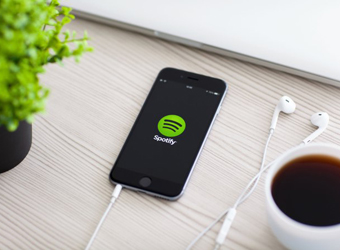Spotify could be valued at $20 billion when it goes public and eventually be worth $100 billion, one investment bank’s study showed Monday.
GP Bullhound, which advised Spotify for a number of years on fundraising, laid out a thesis on Monday that could see Spotify’s valuation rise to $55 billion by 2020, before reaching the $100 billion mark, which would make it one of the most valuable stocks in the world.
A number of reasons could be behind the valuation from faster-than-expected subscriber growth to increased penetration in the emerging markets and better deals with music labels, GP Bullhound said in a report.
100 million subscribers
Spotify announced in July that it had hit 60 million paying users. GP Bullhound sees this hitting 100 million by mid-2018, quicker than it had originally thought. And by 2020, the user base could hit 500 million, with 200 million users being premium subscribers.
This will be achieved by penetrating new markets, but along with that will come fewer paying subscribers as a percentage of total users, and perhaps lower average revenue per customer, due to a dilution effect of cheaper subscription plans.
“Spotify have introduced family plans and student discounts and if we factor in that emerging markets have a much lower average revenue per premium subscriber we believe that Spotify will see a steady decline in revenue per premium subscriber moving towards 2020 compared to today’s value,” GP Bullhound said in its report.
“This is the reason why we have decreased our estimated average revenue per premium subscriber to $80 — compared to $88 in 2015 and $89 in 2016.”
But the investment bank said that advertising could lead to a higher revenue per non-premium subscriber than previously anticipated.
Profitability on the horizon?
Even though Spotify is set to grow quickly, it is likely to continue recording an operating loss which could “distract investors from the true value that is being created,” GP Bullhound said.
But the music streaming service’s return on investment should improve. Currently for every dollar it invests in a premium subscriber, it gets $3 back. The return could increase to $5 by 2020 as revenue per user stabilizes, churn decreases, and gross margin improves.
Gross margins will improve as Spotify strikes better deals with music labels thanks to its rising user base.
$100 billion valuation ahead?
GP Bullhound’s forecast of a valuation for Spotify of $20 billion after its initial public offering (IPO), is based on it having 70 million premium subscribers and 100 million non-premium users. Given that this will likely be reached in the next few months, the investment bank said its valuation thesis is “conservative”.
Eventually, the Swedish company could hit a $100 billion valuation.
“Given that Spotify’s growth continues and that emerging market growth keeps average revenue per premium subscriber relatively in shape we envision that Spotify has a long term potential of being valued at $100 billion,” GP Bullhound said.
It’s important to note that Spotify is going to carry out a traditional IPO. Sources told CNBC earlier this year that Spotify is going to go public in a so-called direct listing.
During an IPO, the company offers investors shares before it goes public, which allows underwriters to set an initial share price. A direct listing only allows investors to buy shares through the open market, and no price is predetermined.
Apple threat?
GP Bullhound said it does not expect to see Apple outgrow Spotify anytime soon. The investment bank said that Spotify’s already large user base and simpler user interface when using the app, is better than rivals’.
But Spotify does face risks. If the industry moves towards more voice-dominated inputs like Apple’s Siri or Amazon’s Alexa, this could be a disadvantage. Spotify does not have its own voice assistant and it should see Apple’s HomePod smart speaker as a “threat”, GP Bullhound said.
To get around this, Spotify could partner with speaker hardware makers. But this could get expensive.
“Both points mentioned above could in turn require significant investment in both capital and time,” GP Bullhound concluded.
Source: CNBC



